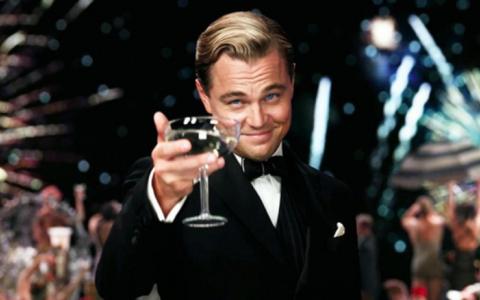
It’s not the speed. It’s the acceleration that drives sane clients crazy and tests the statistical limits. Brace for whiplash.
We talked last week about a few of the disruptive changes the next decade will bring the wealth management industry. Now it’s time to look at the big picture.
A lot of millennials are getting excited about the notion that the economy is finally ready to make up for lost time after the tentative post-2008 recovery. They’re looking forward to a new “roaring ‘20s” ahead.
If statistical patterns repeated, they’d be right on the money. When the data points cluster too heavily in one direction, the random walk tends to overcorrect in the short term.
One extreme replaces another until the overall experience gets back on trend. As a result, slow cycles generally set up fast ones and one decade’s snore becomes the next one’s roar.
With that in mind, there’s a very real chance that advisors and investors who thrived in the post-2008 pace are going to need to recalibrate their comfort zone.
Remember the old “normal?”
This was the slowest and most nervous boom in recent memory. Confidence has yet to really recover from the credit crash.
Investors still spend more time looking nervously over their shoulder than looking ahead with a smile. Even the whiff of a “recession” triggers reflexive defensive moves.
On any given day, the market is either in a binary “risk off” mood or not. There’s not a lot of room for sentiment in between.
As a result, the familiar risk-return calculations broke. People have forgotten how to price risk. Diversification is real, but applications are a joke.
In a healthy world, investors swallow a little risk because they’re confident that the returns will justify the headaches along the way. There’s little real safety there, only degrees of probability.
That’s the kind of world we lived in in other boom decades. Actually most decades are boom decades. We’ve been living in one of the exceptions.
And with that in mind, the 2020s are probably going to feel like a dramatic return to “irrational” exuberance after years spent bargaining with the wall of worry.
New industries and new ways to generate wealth are going to emerge. That’s the good news. Just like the 1920s brought us mass market cars and radio and talking movies and easy credit and aviation and advertising, any normal decade will spawn plenty of innovation.
That’s the good news. But the rising tide is not going to lift all boats. While the 2010s were quiet, they were easy. Most stocks climbed. Most investors got richer.
Booms: noise and waste
Corporate executives who are afraid of taking risks and competing are going to get left behind.
Talent and ambition will flow from stagnant industries to the hot spots. We live in a borderless world now. You’re going to see brain drains and recruiting wars again.
And that’s an environment that rewards a discriminating eye. The market as a whole might climb a lot in a boom decade but returns will be broadly distributed.
Pick the winners, you beat the index funds again. Maybe you beat the market by a lot. Your clients are thrilled. They brag.
Everyone else’s clients feel left out. Expectations start getting inflated. Suddenly 10% a year in the index fund is no longer enough. A 4% return floor is practically insulting when other people are doubling their money.
When returns scale up, there’s room to pay for expertise. The hedge fund profits we’ve seen lately are only a taste of what’s to come.
Advisors who aren’t comfortable picking stocks can stick with the slower crowd. That market isn’t going away. Retirees hate risk and their time horizon is limited.
But if you’re chasing younger clients, you need to wrestle with the fear of missing out. There’s always a better number somewhere. They’ll pester you until they feel confident that they’ll get it.
That’s where a bubble really starts. We’re a long way from that point. The bulls are barely walking at a normal pace as it is. For them to run to unsustainable places, we’re going to need a lot more rally on the books.
What does that even look like? The Dow tripled from the end of 1919 to the end of 1928. It looks like a spectacular return. It’s really only 13% a year.
If not for that final manic year and its 49% boom, the Roaring ‘20s would have practically felt like business as usual.
There were good years and bad ones. Most of the good ones looked a lot like 2019. The decade even opened with a stunning 33% retreat.
But once investors were in the bubble mood, the wall of worry turned into a cliff. Regulations changed. Easy money starved. Prohibition took the wind out of everyone’s sails.
The crash always comes. Even then, those who bought the boom were still ahead of where they started until 1931 ended the party permanently.
A staggering amount of paper money evaporated. Leverage killed. Anyone looking forward to a Roaring 2020s needs to keep that lesson in mind.
You can do extremely well for your clients with an updraft and a healthy view of how risks balance out in the medium term. That doesn’t mean veering out of your comfort zone or bending the statistics.
It only means having some perspective. The world hasn’t ended yet. Even the 1930s ended up making alert investors money.



